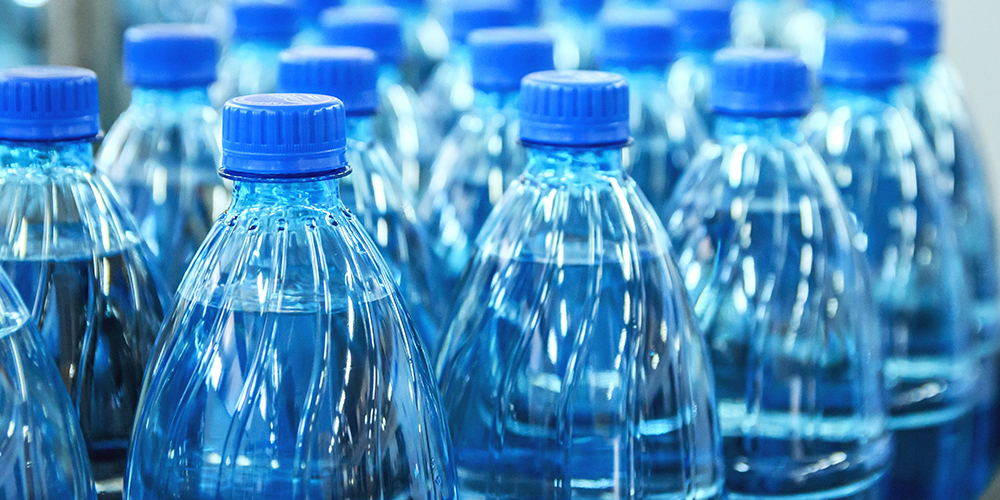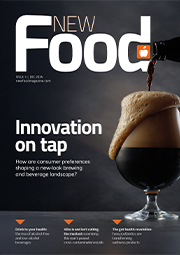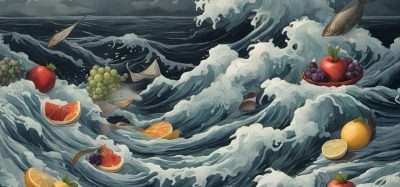IR microscopy for the analysis of microplastics in bottled water
- Like
- Digg
- Del
- Tumblr
- VKontakte
- Buffer
- Love This
- Odnoklassniki
- Meneame
- Blogger
- Amazon
- Yahoo Mail
- Gmail
- AOL
- Newsvine
- HackerNews
- Evernote
- MySpace
- Mail.ru
- Viadeo
- Line
- Comments
- Yummly
- SMS
- Viber
- Telegram
- Subscribe
- Skype
- Facebook Messenger
- Kakao
- LiveJournal
- Yammer
- Edgar
- Fintel
- Mix
- Instapaper
- Copy Link


Microplastics are becoming a major global environmental concern with regular major newsworthy studies revealing the presence of plastics and microplastics in remote geographic locations, or as contaminations in many different consumer products, especially food and beverages, as well as within the digestive systems of marine species. The sources of the microplastics can be primary microplastics, i.e. materials that are specifically designed or manufactured to be of small dimensions, or secondary microplastics that start off as larger materials but are broken down in the environment into smaller fragments. Microplastics were initially defined as being plastic materials below 5mm in size, but the definition is now more commonly stated as plastic particles between the size 1mm down to the micron level, although there is no globally accepted definition.
Bulk plastic pollution in the environment is a major visible concern and needs to be addressed. However, microplastics are of the size that are not always visible to the human eye, but their impact is significant to the health of aquatic and marine species and can ultimately end up in the human food chain. Microplastics have also been detected in a wide range of other food and beverage products, including bottled water, despite bottled water being advertised as being the clean, natural, healthy alternative to tap water.
Analysis of both environmental samples and consumer products containing microplastics is essential to determine their prevalence and their impact. A range of analytical techniques have been applied to the analysis of microplastics. Of the techniques adopted, infrared (IR) spectroscopy, and more specifically IR microscopy/imaging, is the primary analytical technique for the detection and identification of microplastics. This webinar gives details on the use of the IR microscopy and imaging techniques and describe the optimum sampling and sample cleanup procedures employed. Results are shown highlighting the detection and identification of microplastics present in a variety of different bottled water products.
The webinar answers the following questions:
- What are the best sample collection and clean up procedures for a range of sample types or sample origins?
- Which IR sampling modes are best applied to microplastic samples?
- Are bottled waters free from microplastics?
Keynote Speaker
Ian Robertson, Senior Applications Scientist, PerkinElmer


Ian has been working in the field of spectroscopy applications for over 35 years. He became a Graduate of the Royal Society of Chemistry in the 1980s achieving MRSC and CChem status. He is currently a Senior Applications Scientist in the Spectroscopy group at PerkinElmer, based in Seer Green in the UK.
He has been working on microplastic applications over the past 4 years.
The rest of this content is restricted - login or subscribe free to access


Why subscribe? Join our growing community of thousands of industry professionals and gain access to:
- bi-monthly issues in print and/or digital format
- case studies, whitepapers, webinars and industry-leading content
- breaking news and features
- our extensive online archive of thousands of articles and years of past issues
- ...And it's all free!
Click here to Subscribe today Login here










Ian, I have been performing IR spectroscopy for over 40 years and IR Microscopy for over 25 years, I thoroughly enjoyed your excellent presentation. Very many good tips for those new to the field. Thank you.
Dear Dr. Daren,
basically the water is filtered on Filters like Anodisc or Si based filters. Then the remaining particles are analysed by FTIR microscopy. ATR as a contact technique is only applicable with larger ATR crystals (usually Ge) contracting a large area and then scanning this by moving the whole “sample+filter sandwich” under the IR beam. Alternative is reflectance, but due to the poor pysical properties of the samples, unhomgeneity in particle size and surface properties this does not work well.
One of the pioneers in this field, Dr. Gerdts (AWI Germany) has used Transmission, nowadays with SI (IR transparent) filters and using FocalPlaneArray FTIR microscopy
https://www.awi.de/en/focus/marine-litter/tracking-down-microplastic.html
Best Regards Gernot Höhne
Hi, I am chemist and perform water analysis, I have noticed plastic particles before 10 years.I have also noticed that water with CO2 in the plastic bottle gives off a bad smell…my question is how to co-operate with your company?
Contact perkinelmer.co.uk or on 01494 874515 with your question
I am curious to understand how infra red analyses may be performed in the presence of water.
Steve
Thanks Steve – we’ll pass this question on to Ian Robertson of Perkin Elmer for a reply. Best wishes, the New Food team.